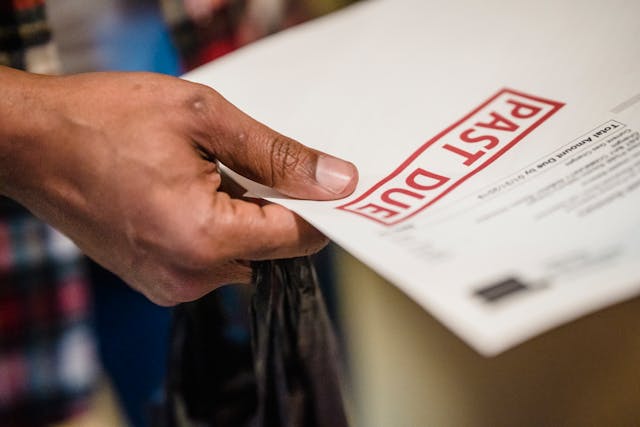
Late payments slow your cash flow and steal writing time. You send another reminder, then another, and a simple net-15 turns into a four-week chase. The fix is not more emails; it is a light system that bills on schedule, follows up on time, and tracks what is still unpaid. That is what recurring invoices give you.
Everything I’ve shared here—and more—is in my book, available on Amazon. Click the link if you’re ready to take the next step.
Why Recurring Invoices Matter for Freelance Writers
Here is the shape of that system. A small system with recurring invoices turns chaos into a reliable payment rhythm.
Predictable Income Through Automated Billing
A stable writing practice needs a predictable cash flow. When you set invoices to repeat on the same day each month, you establish a consistent payment rhythm that helps protect your budget. You can match due dates to your rent, utilities, and software renewals, which reduces stress and makes planning easier. Invoice automation also reduces small errors, such as missed lines or outdated rates, because your template remains clean.
Aim for these simple targets as you switch on automation:
- On-time payment rate ≥ 90 percent by day 30
- Days Sales Outstanding (DSO) ≤ 18 days
- Invoicing and follow-ups ≤ 30 minutes per week
Time Saved With AI-Powered Payment Systems Using Recurring Invoices
AI cuts busywork. It can prefill client details, attach scope notes, and schedule automated payment reminders at set intervals. It can suggest due dates based on past behavior and flag invoices that need attention. Over a quarter, this saves hours you can use for drafting, interviews, and edits. You still approve the final send, but the machine handles the repeatable steps.
Client Trust and Professional Reputation
Professional systems build trust. Clients receive invoices on time, with clear terms and consistent payment reminder emails. They see the same structure each month, which reduces confusion. On your side, you avoid ad-hoc chases that feel personal. The system does the talking, and you stay focused on the work.
Setting Up Recurring Invoices the Smart Way
Automation only works if your setup is clean and repeatable. Choose tools that fit your workflow, then lock defaults so every invoice behaves the same.
Choose AI Tools That Match Your Workflow
Start with what you already use. If your writing stack lives in Google Drive, choose an invoicing tool that exports clean PDFs and logs data to a simple spreadsheet. If you run a CRM, connect it so contact details stay in sync. Look for recurring billing support, smart templates, analytics, and gentle reminders for overdue invoices by email or SMS. Use the checklist below to lock these choices into a repeatable setup.
Policy Defaults
- Standard terms: Net-15 for ongoing work, Net-7 for quick-turn assignments
- New clients: 30–50 percent deposit before start
- Late fee: 1–1.5 percent per month or a flat $15 after 30 days
- Currency and tax: confirm VAT or sales tax rules before first send
Recurring Invoices Setup Checklist
Create a template with your logo, scope label, and payment terms. Add your preferred payment methods and a short thank-you line. Set standard due dates, such as net 15 or net 30, and add default late fees if that aligns with your policy. Set reminders for 7, 14, and 30 days past due. Test with a small invoice to yourself to confirm the dates, links, and totals are correct.
Use this default cadence unless your contract specifies different terms:
Reminder Cadence and Copy
- 3 days before due: “Friendly heads-up that Invoice {{#}} is due on {{date}}. Pay here: {{link}}.”
- On due date: “Invoice {{#}} for ${{amount}} is due today. Quick link: {{link}}.”
- +7 days: “Quick reminder on Invoice {{#}} (${{amount}}), now 7 days past due. Here is the link: {{link}}.”
- +14 days: “Following up on Invoice {{#}}. Please pay by {{date}} to avoid a late fee. Pay here: {{link}}.”
- +30 days: “Invoice {{#}} is 30 days past due. Per policy, work pauses until payment clears. Settle here: {{link}}.”
Link Payment Gateways and Notification Settings
Connect Stripe or PayPal so clients can pay with one click. Enable card and bank transfer if your platform supports it. Enable notifications to receive alerts for viewed invoices, partial payments, and failed charges. Keep client notifications short and polite. A short subject line and a direct link to pay reduce friction.
Treat the following as your baseline policy; adjust it only when the data justifies doing so.
Payment Policy Defaults
| Scenario | Term/Action | Late Fee | Next Step |
| New client, first project | 50% deposit, Net-15 | None | Work starts after deposit |
| Repeat client, ongoing retainer | Auto-send monthly, Net-15 | 1%/mo after +30 | Annual 3% uplift notice |
| Invoice hits +7 days | Send reminder, pause new work | None | Work starts after the deposit |
| Invoice hits +30 days | Pause work until paid | 1–1.5%/mo or $15 | Send formal notice |
| Send a formal notice | Switch to 50% upfront | As above | Milestone billing thereafter |
How AI Enhances Late Payment Tracking With Recurring Invoices
Chasing overdue bills feels personal. Data makes it procedural.
Automated Follow-Ups and Gentle Reminders
No one enjoys chasing money. Let the system send firm but friendly reminders at scheduled intervals. Keep the message simple: the invoice number, the amount, the due date, and a clear payment link. Use neutral language that preserves the relationship. If a client provides a timeline, update the due date and pause reminders until that date has passed. Privacy note: keep reminders professional and store only billing-relevant data.
Recurring Invoices and Smart Tracking Systems
AI can rank risk. It identifies patterns across clients and projects, such as repeat delays or frequent partial payments. It tags accounts that require upfront deposits, milestone billing, or stricter terms. With a glance, you can see who pays on time, who drifts, and who needs a different plan. This is where late payment tracking moves from guesswork to clear signals.
Risk Rubric
- Score 0–1: pays on time, reminders rarely needed → keep terms
- Score 2–3: occasional late, multiple reminders → add deposit or shorten terms
- Score 4–5: chronic late, disputes, failed payments → prepay or pause work
Apply actions per Payment Policy Defaults.
Insights From Analytics and Payment History
Dashboards help you make better decisions. Use the metrics below. If a client slides from two days late to ten days late over a three-month period, switch to a split invoice with a deposit. If Friday’s performance is better than Monday’s, adjust your schedule. Data provides a quiet way to improve outcomes without lengthy debates.
Key Metrics and Simple Formulas
These are the numbers your dashboard should surface each week:
- DSO = (Accounts Receivable ÷ Total Credit Sales) × days in period
- On-time % = Invoices paid on/before due ÷ total invoices
- Median reminders to pay = typical reminder count before payment
- Track these in your invoicing dashboard or a simple spreadsheet so you can see progress every week.
Reminder Schedule at a Glance
| Timing | Channel | Subject/Opener | Action Link | Tone |
| 3 days before due | Friendly heads-up: Invoice {{#}} due {{date}} | {{link}} | Warm | |
| Due date | Invoice {{#}} is due today | {{link}} | Neutral | |
| +7 days | Quick reminder on Invoice {{#}} | {{link}} | Polite | |
| +14 days | SMS | Following up on Invoice {{#}} | {{link}} | Firm |
| +30 days | Account on hold until payment | {{link}} | Formal |
If payment does not clear after the +30 notice, follow the Escalation Path in below.
Building a Sustainable Payment Routine With Recurring Invoices
Billing remains calm when it follows a weekly cadence. Review once, act once, and let the system take care of the rest. The steps below keep that rhythm tight.
Integrate AI Reminders Into Your Weekly Routine
Open your dashboard, scan for unpaid invoices, and note any that have crossed a threshold, using the reminder cadence outlined in Section 2. If an invoice is seven days past due, let the system send the next reminder. If it has been more than 30 days, send a brief personal note and offer a call. Keep this review to fifteen minutes. A steady routine beats a big cleanup at the end of the month.
15-Minute Friday Routine
- Open the dashboard and filter “Unpaid” and “> 7 days.”
- Approve queued reminders for the next week.
- Tag any invoice that is 30 days or more past due and send a formal notice.
- Update each client’s risk score and terms note.
- Record time spent and DSO snapshot in a simple sheet.
Retainer Billing for Loyal Clients
Retainers and ongoing work benefit the most from repeating invoices. Set the monthly amount, the send date, and the due date. If the scope varies, use a base retainer with an item for overages.
Retainer Guardrails
- Proration for mid-month starts
- Overage line for extra rounds or rush fees
- Annual 3 percent uplift with 30 days’ notice
- 30-day cancellation window, work stops on the end date
Measure Efficiency and Reduce Mental Load
Track three things: time spent on invoicing, days’ sales outstanding, and percent on-time payments. Aim to lower the first and raise the last two. If your reminders reduce open invoices by the second week, keep them. If a message creates replies but not payments, rewrite it. Small changes add up, and you will feel the lift in energy when billing no longer nags your attention.
Escalation Path
- Friendly reminder
- Personal note
- Pause work
- Final notice
Align each step with the Payment Policy Defaults and the +30 notice from your reminder schedule.
Final Thoughts
You earn more when billing takes less work. Utilize recurring invoices to establish a steady rhythm, pair them with AI reminders to streamline follow-ups, and leverage analytics to inform policy adjustments. Over 90 days, expect higher on-time payments and a lower DSO with less admin. Review once a week so you can write.


Pingback: AI Project Management: Prioritize Tasks, Track Deadlines - The AI Freelancer